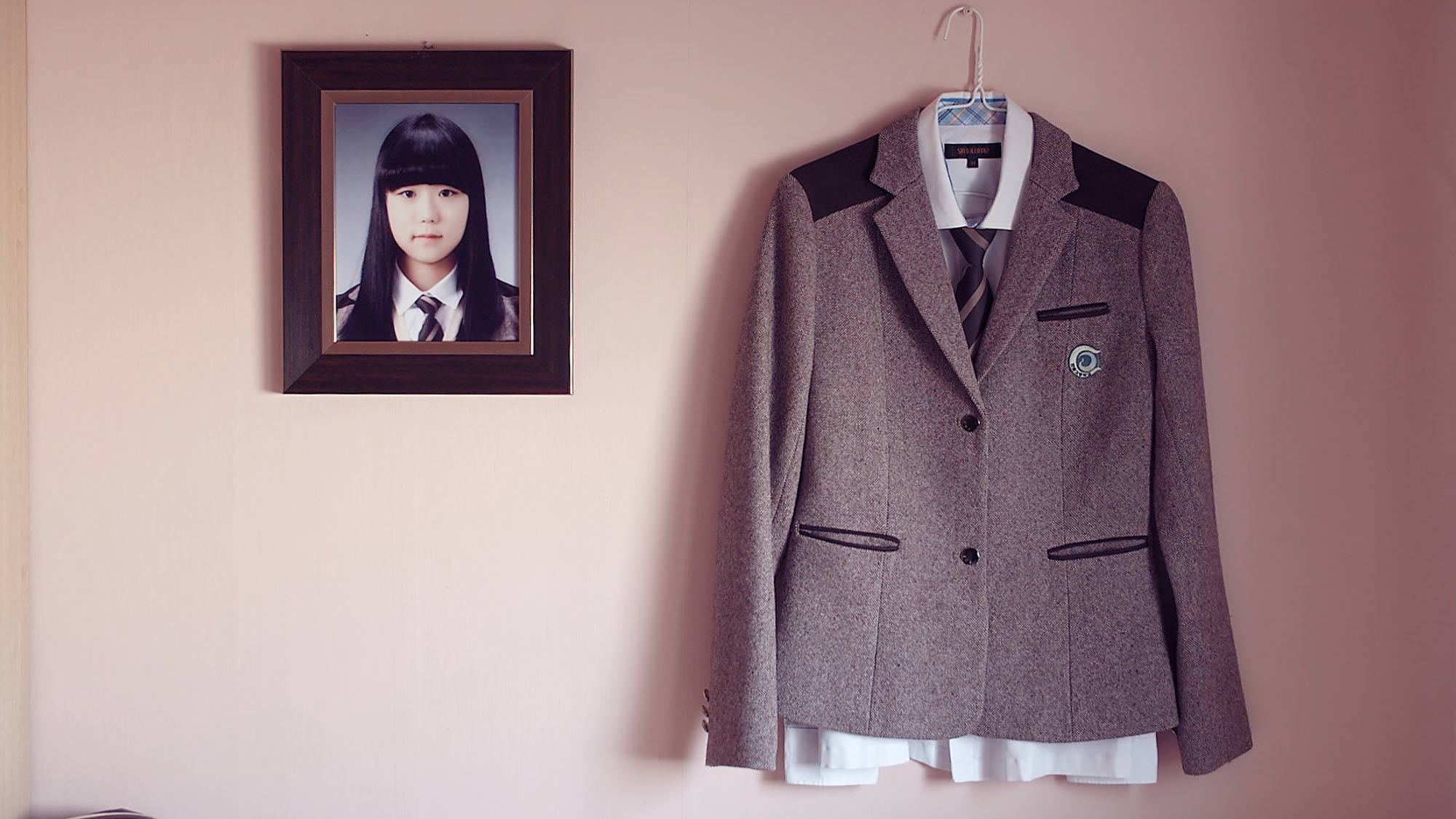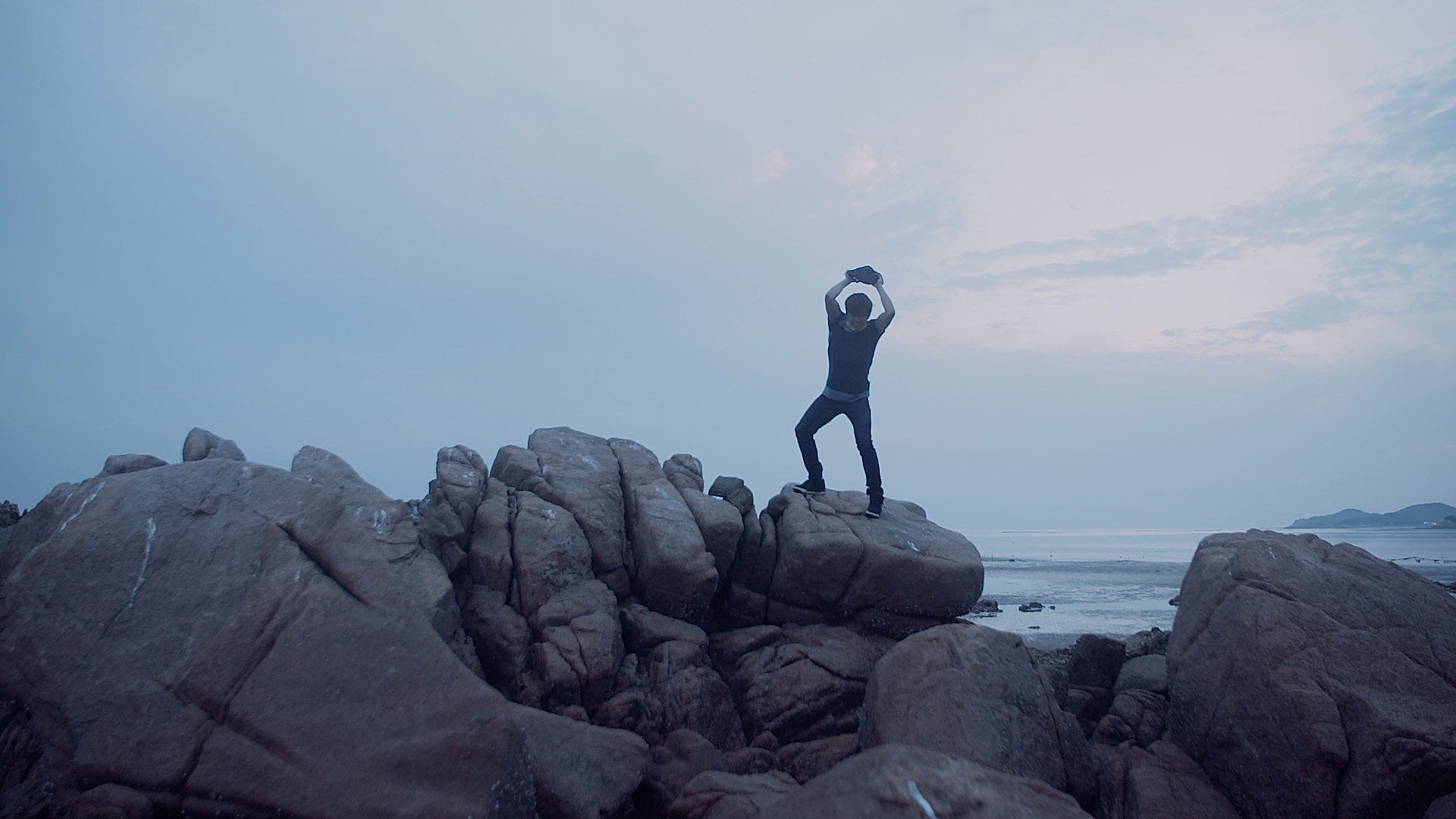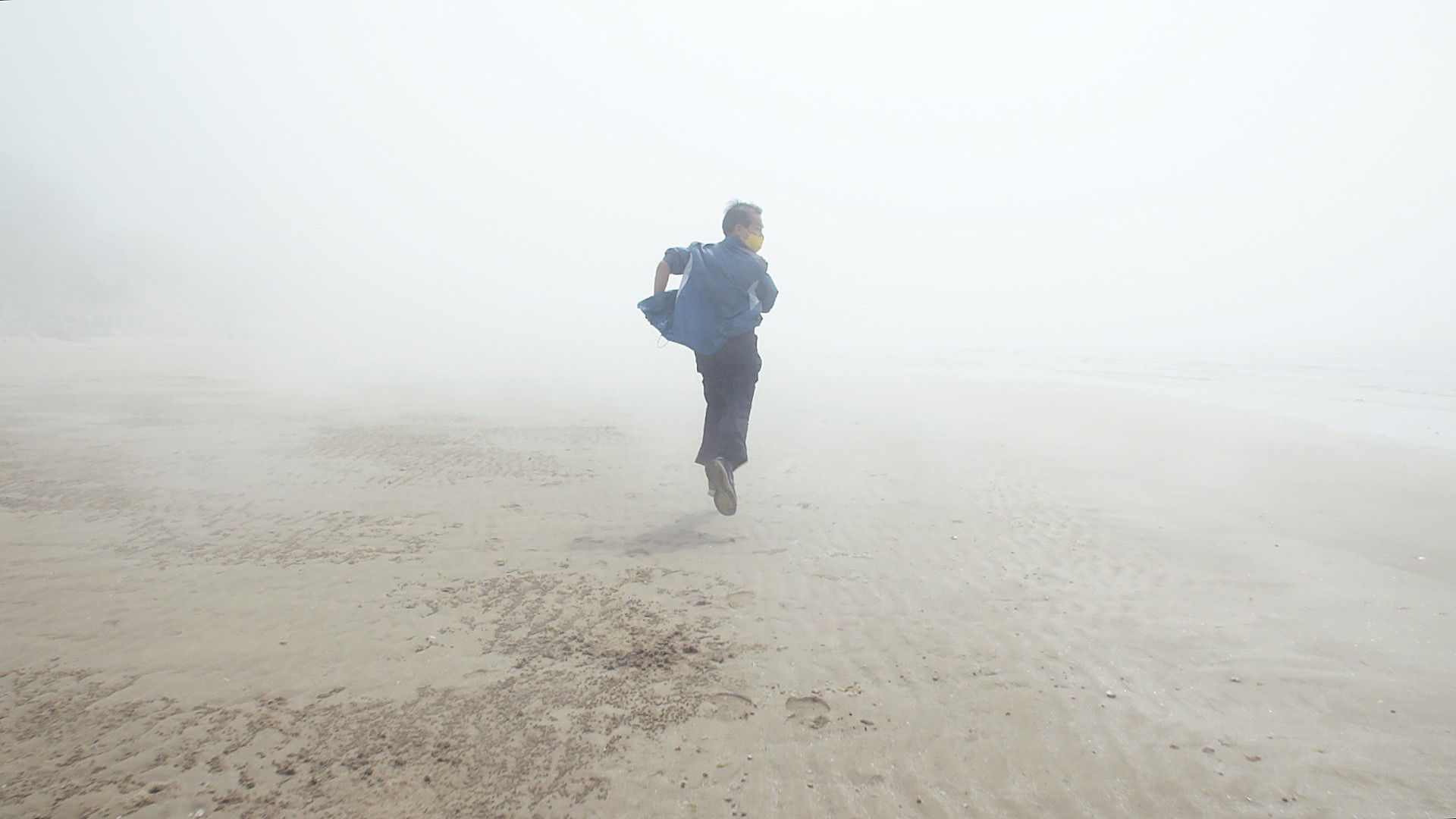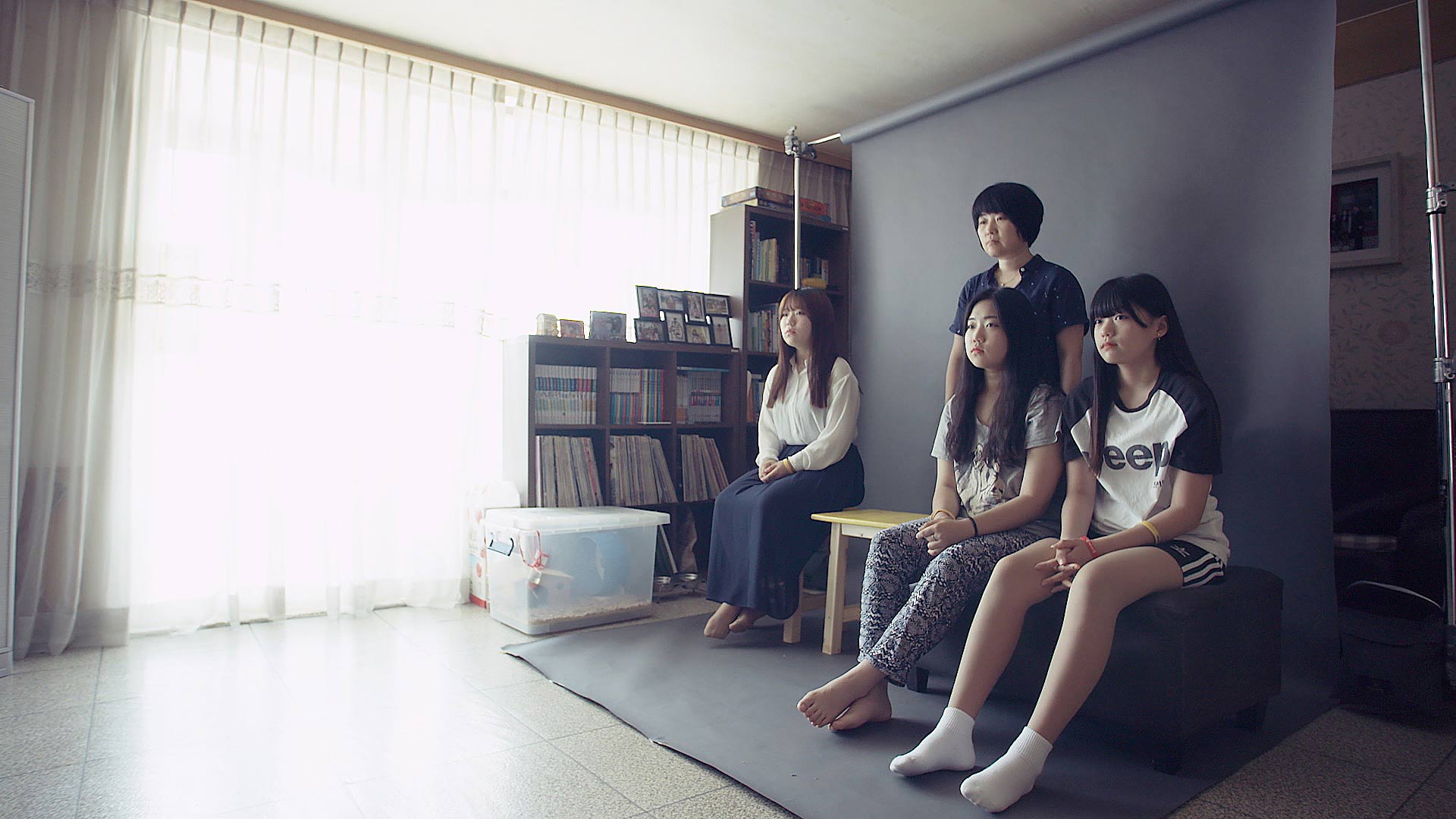
On the 16th of April 2014 a ferry travelling from Incheon to Jeju Island in Korea capsized claiming the lives of 304 out of 476 passengers and crew members. This very public tragedy reverberated throughout society and politicised many of the victims’ surviving family members, as they campaign to this day for an explanation from a government that appears wilfully reticent to provide answers. Drawing on his background as a visual artist, familiar DN alumnus Nils Clauss speaks to us today about his desire to create a non-exploitative film which commemorates the victims, whilst expressing the long lasting effects this tragedy has had on their grieving families.
You first combined the documentary and music video forms in Urban Island for Sigur Rós. What made you want to return to this hybrid format for Last Letters and how did that earlier project inform the approach you took to this more sensitive subject matter?
When we made the Urban Island film, it was already very common within the music video landscape to integrate narrative elements. Still I felt that a cross-over of music videos with documentary was something which had not really been explored much among filmmakers so it was exciting to try something new with a different approach. But while making the Urban Island video, I quickly realised that this genre mash-up was exactly what the film needed. Let’s say, if Urban Island would have been a music video with a narrative approach, it would have lacked the rawness and the realness, which helps people connect better to the subject matter and really feel for the person we portrayed in the video. And if Urban Island would have been solely a short documentary without the powerful music by Sigur Rós supporting the piece, again the audience might have not been able to emotionally connect to the video as much.
When Levi approached me with some of his new music, including Since Last Letters, I pitched him the idea of a hybrid film similar to what we did with Urban Island. Levi was very open to the idea of experimentation and we agreed that the final result should not be something which puts a certain genre in the centre of the film. First I envisioned Last Letters to be very similar in structure and either start or end the film with a single documentary sound bite, while putting the main emphasis on the footage and the music itself. But the more I played out the structure of Last Letters, I realised that it had to be different and in a way have a more radical approach towards being a hybrid film. Whereas I would still call Uran Island a music video, Last Letters is really a combination of music with documentary and fictional elements.
Levi and I agreed that tragedy and disaster should not be exploited for marketing purposes.
The Sewol issue is such a sensitive topic that I felt it best that it not be associated with a certain genre. Instead I wanted to make something more abstract and poetic, which cannot be pigeonholed into something very specific. If I imagine a film about the Sewol disaster told within a single genre, it just does not feel appropriate to me. A strictly narrative piece about Sewol would be too much in the lines of a film like Titanic. This kind of storytelling would really exploit the Sewol issue from a commercial and marketing point of view. A Titanic kind of Sewol film in my eyes would be a disgrace. Documentary as a type of genre has been explored in various films about the Sewol tragedy. It is important that those films are being made to inform the public and make sure that people don’t forget about the accident, since the government has taken all measures to trivialise what happened on April 16th 2014. Nevertheless, I feel that most Sewol related documentaries have been done in too much of a rush, just for the simple purpose of getting information out there and to tell a certain truth about how the accident took place.
Personally, I feel that documentary by itself needs a lot of investigation and it takes time to lay out the facts and structure them into a film. In addition, documentary in Korea is a very TV orientated genre. Therefore, not only are documentary films produced in a rush, they also mainly draw on emotions and care about TV viewing figures instead of telling the best story possible. A music video by itself related to Sewol again would have exploited the issue. Levi and I agreed that tragedy and disaster should not be exploited for marketing purposes. Therefore Levi’s music simply delivers the score to the film without coming too much to the fore within the film. I feel that Levi’s music has a certain subtleness and leaves room to breathe. The title of the film references Levi’s track Since Last Letters, but mainly that is based on the episode about a letter from a son in the film, who lost his father. This episode was a total coincidence, but also a final confirmation that Since Last Letters was the right track and Last Letters the best title for this film.

The Sewol tragedy is a very politically charged event, with many of the families frustrated by the government’s crisis management and lack of answers. Was this an area you considered covering in earlier drafts of the film? Did the families want to discuss it during their interviews?
Correct. Many people in Korea, not just those affected directly by the tragedy, have a lot of questions about the circumstances of the accident and who should be held responsible for the loss of so many innocent lives. Now that more than 2 1/2 years have passed, the Sewol tragedy is still a huge issue here in Korea and has split public opinion in many ways. Due to frustrations with the Korean government over its crisis management, many families feel abandoned and even betrayed. Since no one from government was able or willing to answer questions about how the accident took place, the families started organising themselves and most of them became active in regular protest to bring light into this dark episode of Korean history. The fact that the government did not take any solid actions to find out who was responsible for this disaster and have not been able to retrieve the remaining victims, nor salvage the boat, has added insult to injury for the families.
In conjunction with the protest events, broadcast media and also local documentary filmmakers have started to cover the aftermath of the accident in order to potentially reveal what really happened and to speak out about the government’s reaction. This is important work. Recently government censorship has been on the rise and the media has been prevented from voicing unfavourable opinions. Basically, freedom of speech in this country has been jeopardised.
We started pre-production for our film just before the 2nd anniversary of the Sewol accident. The fact that time has passed obviously made it possible for me to look at the tragedy from a different angle based on the temporary distance. But as a visual artist rather than a journalist, I thought it would be interesting to look at the tragedy from another angle, to do something unlike anything that had been done before and that is more in line with my previous work in relation to space and architecture. I also preferred to do something that addresses the issues of loss and memory in a way that the film could also be positive and help to give some degree of closure to the participants.
Since most of the families have a protest related background, it was their intention to express their anger with the government and show that they disagree with the government’s crisis management. So we partly talked about this in the interviews, but my questions were mainly directed towards questions related to space, loss and memory. Still I wanted to give them space to express their opinion beyond the actual subject matter for my film, but mentioned every time that this is something which might not make the final cut of the film. But not each family we talked to was confident in addressing politically related issues. People here in Korea know, especially during the past two governmental terms here in Korea, that a kind of self-censorship has arisen. After a couple of cases where the government took action against people who openly expressed their concerns, people have started to be very worried about what they say in public – in particular in the media. This is something I also felt during the interviews. Whenever the interview would move towards government related issues, some families did not feel comfortable expressing their views with the mic rolling.
I did not make Last Letters to provoke. Also I did not want to put the families in an uncomfortable position by using strong statements being critical of the government. The lives of the families are already so difficult, why risk making it more difficult for them by creating something controversial. I really hope that this film speaks to the families, but also makes a bigger international audience aware of this dark day in Korean history. Hopefully it makes people look further into the issue and look beyond what the mainstream media reports. This is something the families, who have been abandoned by the Korean government in their search for the truth, are really hoping for. And those have been my intentions for this film.

Being cognisant of the family members’ emotions was an important aspect for you. What did you do before, during and after speaking to them to ensure that remained the case throughout?
Certainly this production has been very emotionally sensitive from start to end. It was very difficult to gain the trust of the families so we spent a lot of time on pre-production. There is one organisation which represents the interests of the high-school students’ families, another group represents the interests of the teachers’ families, and another group represents the crew members’ families. In Last Letters, I wanted to cover all those differently related families. Most Sewol related films mainly focus on the families of the students, which kind of upsets the other families, as they feel that their fate is not represented in an equal manner.
So we had to talk to all those various organisations. They were all a bit sceptical at the start, as they felt a lot of media coverage exploited their situation and distorted facts. By the time we were introduced to the people who would go on to participate in the film, we had become so involved with these representative groups that we were able to encounter the families more naturally from the start. It felt OK at that stage to communicate our vision for the film with the families, even though the day we shot at their homes was always the first day we met them in person.
As a visual artist rather than a journalist, I thought it would be interesting to look at the tragedy from another angle, to do something unlike anything that had been done before.
Chronologically we always shot the interiors first, then the portrait shots, and we ended with the interviews. Kuiock, our producer, took a huge part in communicating with the parents while Sungil and I shot the interiors at the start. I was really thankful and was impressed with how well Kuiock handled those communications and managed to break the ice. That way it did not feel too uncomfortable to continue with the portrait shots and do the audio interviews. But still, the interviews always hit us emotionally and brought us back to the awful reality of the accident, confronting us with the deep sadness of the families. Each interview was about 30 minutes in length and it was emotionally exhausting for everyone involved. For sound purposes we did the interviews in the smallest rooms of the house. Together in a small room with the families, the vibe felt more tense but it also helped to loosen barriers and to emotionally connect better with the interviewees, I thought.
The challenge for me was to navigate the interview in a way that the family members didn’t become too distressed. I did this by looking for a very rational and, if possible, non-emotionally driven way to tell their individual stories. General media, in particular television, draws on emotions and they are just waiting for the moment where an interviewee bursts out in tears. Personally I really wanted to avoid those moments. I didn’t want to exploit people’s suffering for our film. Levi’s music already takes the audience on an emotional journey, if I were to also visually communicate sad emotions I feel this would have taken things too far. In terms of the interviews, I think it is only important what the families communicate. I want the audience to focus on what they say. If we had shown people crying it would have only been distracting and prevented them from communicating an essential message beyond their grief. To find a proper balance of following what is essential for the film, but then also be sensitive and reacting to the emotions of the interviewees, was of course a huge challenge.
I think the most awkward moments were always the times we finished the interviews. After all that emotional upheaval, it was difficult to segue into wrapping the shoot, gathering the equipment, and moving on. It felt like they gave us their deepest emotional and personal insight into their life and we just leave without anything to offer, just going back to normal life. I think this is what drained me the most and to balance that out it really needed the film to be completed in order to ‘repay the families’ favours’.

Absence of course holds a huge emotional and physical place in this film. How did that presence inform your composition, gear and structural decisions for the film?
As part of a Korea related trilogy, Last Letters uses a lot of the spacial language which I have already shown in Bikini Words. Both films deal with the subject matter of space and as the camera in Bikini Words was floating through spaces, which relate to Korea’s industrial period of the 1970s and 1980s, here in Last Letters the camera floats through the spaces which relate to the victims of the Sewol tragedy and their families. Bikini Words had an additional story-telling related layer, in which I placed workers from the factory period in tiny rooms, which resembled the spaces they lived in.
Last Letters, I felt, needed an additional layer in order to emphasis absence. A good way to illustrate that was through staging a family portrait. The family portrait in Korea has a much more important role than in the West. Each Korean household usually has a family portrait framed in the living room to show the family as a whole, its unity, and together they participate in this happy moment of family pride. But the Sewol tragedy challenges the concept of the family portrait and it is something the families of course are now struggling with, as not all their beloved ones can be included in the shot.
In Last Letters, I wanted to demonstrate the idea of the Korean family portrait, but also deliberately did not want to leave the family’s beloved ones out. This is why I decided to leave a gap with an empty chair for whom they lost in the ferry tragedy. This way it was my intention to express presence through obvious absence of the victims. Through the grey photo wall, which I placed behind the families as a backdrop, I wanted to enhance the element of a portrait being taken and that way make the family portrait element less directly linked to the film itself. Since I am also working as a photographer, I have always been interested in the overlap of photography and film.
I didn’t want to exploit people’s suffering for our film.
The drone shots were an important compositional element used in the video to express absence. We went to Jeju Island for the drone shots, which would have been the final destination of the ferry. Jeju is a very popular holiday island in the south of Korea. The school children were especially excited about this trip to Jeju Island, so I felt it made sense to implement the destination within the film. With the drone compositions shooting straight down from above, I wanted to give the shots a transcendental kind of feel, so it almost feels like the victims are observing the landscape from above.
The breaking waves are reminiscent of the boat sinking, whereas the last drone shot at the end of the film flies above a forest to illustrate a more pretty, possibly transcendental space and safe haven instead of closing the film with the more violent scenes of the ocean. This is linked with the voice-over by a son who explains where he wishes his dad could be now, after the accident. This was the first time I utilised a drone for my personal work. For Last Letters the use of a drone to me really made sense. These days I feel certain types of gear is used without really reflecting about its purpose or why a certain type of shot should be part of a production or not. Of course drone footage mostly looks stunning and upgrades the production value of a film. But mostly it feels like little more than a gimmick. Hopefully the audience connects the drone shots to the ideas I want to communicate.

The notion of time was another element used to visually communicate absence. The whole video was shot in slow motion. The interiors were shot in 60fps and the chasing scenes were shot in 120fps. Within 2 1/2 hours the ferry sunk under water and for the passengers on board their rescue was a fight against time. The fictional chasing scenes are meant to illustrate this fight against time and that time is short. The notion of time is also communicated in the title design of Last Letters. Our graphic designer In-ah came up with the idea to implement a mask within the title typography and implement the same footage as shown, but only delayed in time. In the end of the film all the names of the victims are displayed. In-ah decided to show the names with a flicker to express the lives of the victims fading out within a short period of time.
As you mentioned above, Last Letters along with Bikini Words is part of your Korea related trilogy of shorts. What area will final instalment Plastic Girls delve into? Any idea when we’ll get to see it?
I am currently in the final stages of wrapping the Korea related trilogy. Plastic Girls has already been shot and edited into a 10 minute long version, which still needs to be cut down to 7 minutes to make it the same length as Bikini Words and Last Letters. The film will be finished at the start of 2017. Plastic Girls is originally based on a photo series called Plastic Welcomer, which I shot last year about plastic mannequins. Here in Korea those mannequins are sometimes placed in front of store fronts and their feminine appearances are mainly exploited for the sake of commerce. The three short films in this trilogy together will depict on issues of space and memory and raise social, political and gender related questions within a Korean context of past, present and future.


